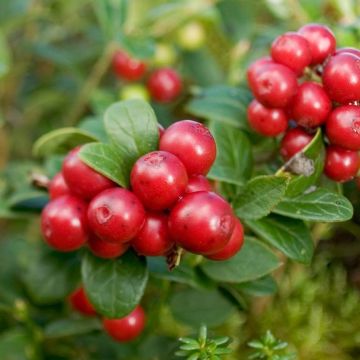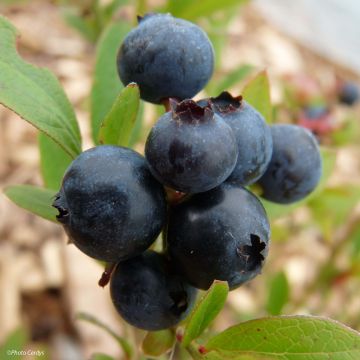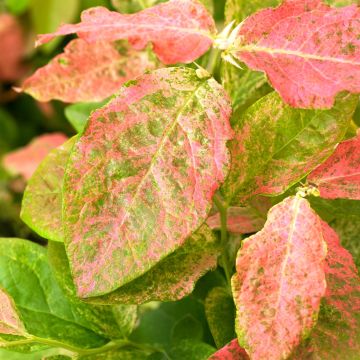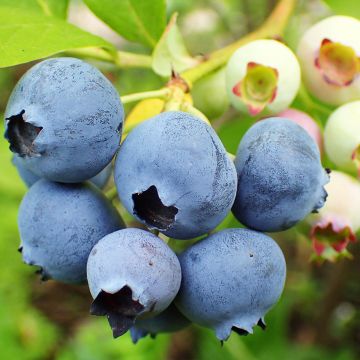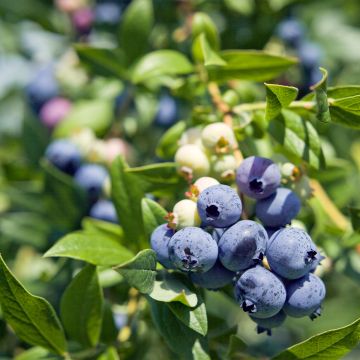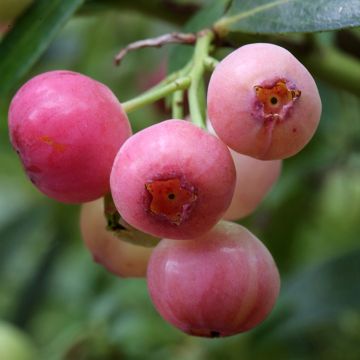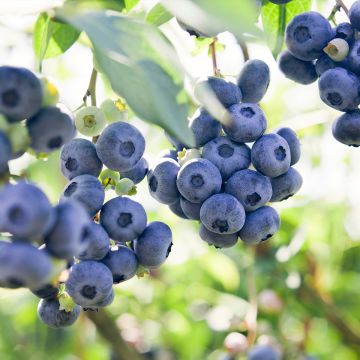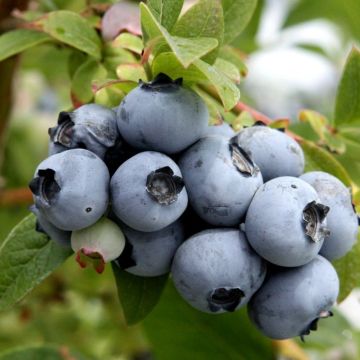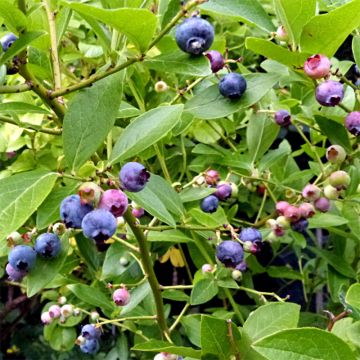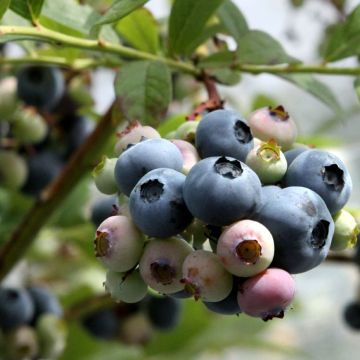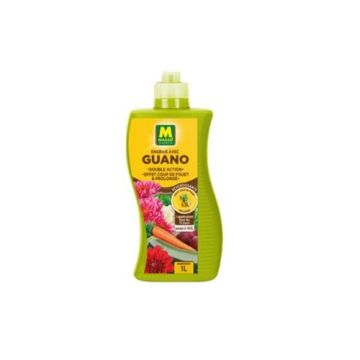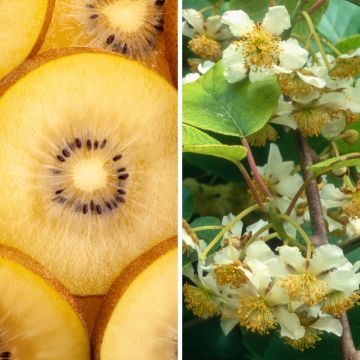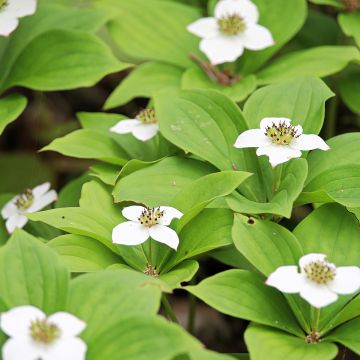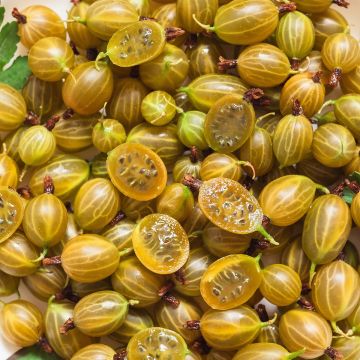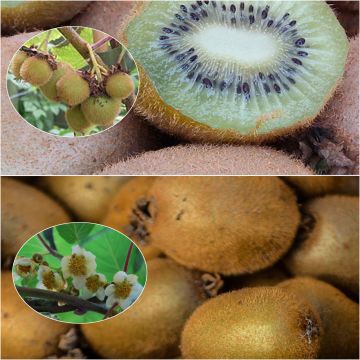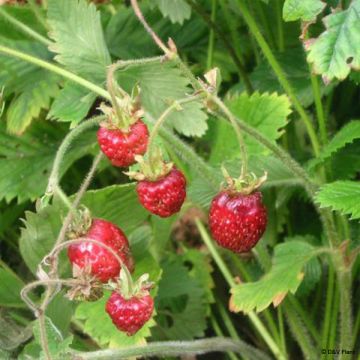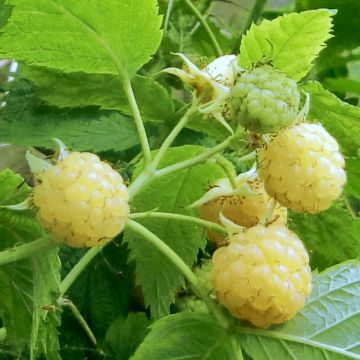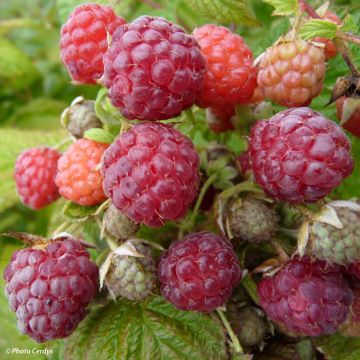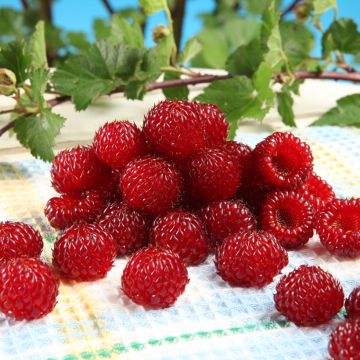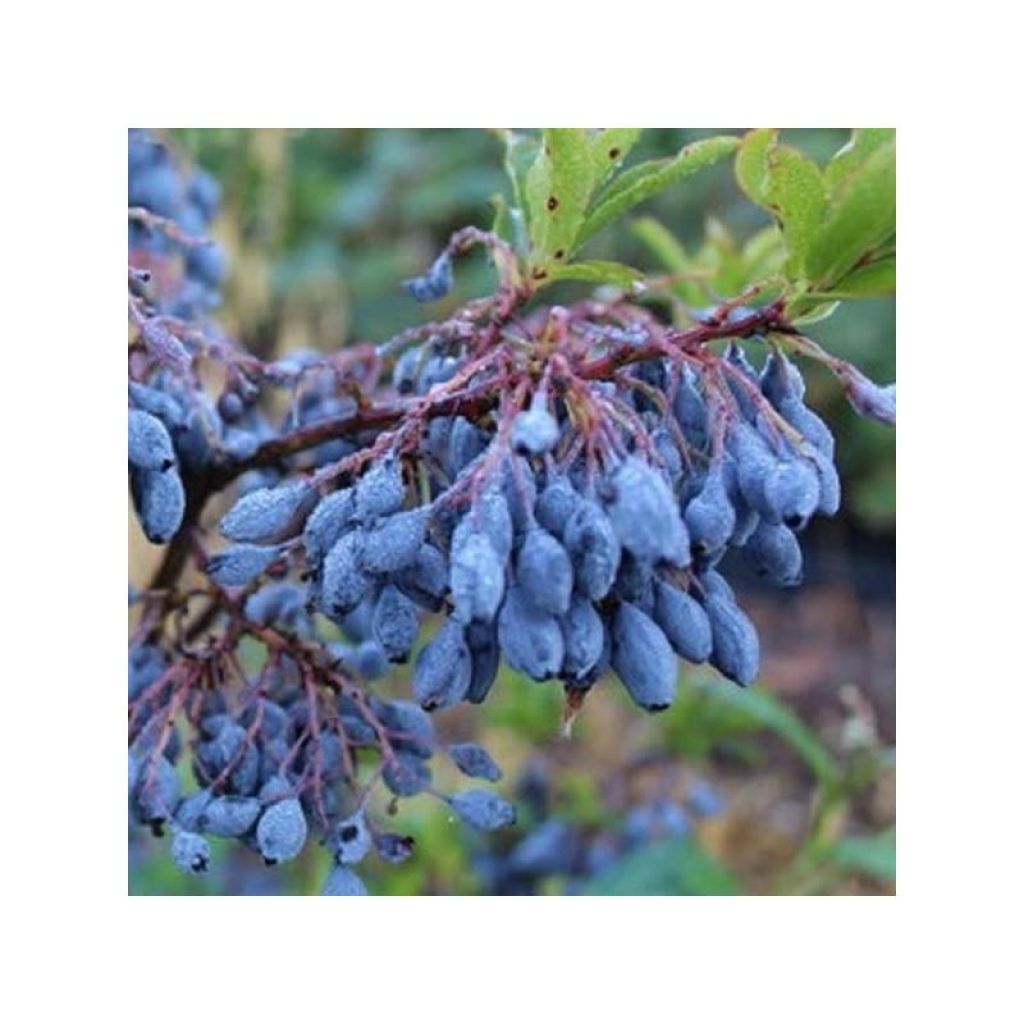

Myrtillier Goutte Bleue - Vaccinum cylindraceum
Myrtillier Goutte Bleue - Vaccinum cylindraceum
Vaccinium cylindraceum Goutte Bleuef® 'Blautropf'
Azores Blueberry
It arrived in good condition, planted immediately. Now we must wait patiently for the young plant.
jean-marc, 23/05/2023
Special offer!
Receive a €20 voucher for any order over €90 (excluding delivery costs, credit notes, and plastic-free options)!
1- Add your favorite plants to your cart.
2- Once you have reached €90, confirm your order (you can even choose the delivery date!).
3- As soon as your order is shipped, you will receive an email containing your voucher code, valid for 3 months (90 days).
Your voucher is unique and can only be used once, for any order with a minimum value of €20, excluding delivery costs.
Can be combined with other current offers, non-divisible and non-refundable.
Home or relay delivery (depending on size and destination)
Schedule delivery date,
and select date in basket
This plant carries a 6 months recovery warranty
More information
We guarantee the quality of our plants for a full growing cycle, and will replace at our expense any plant that fails to recover under normal climatic and planting conditions.

Description
This astonishing Bilberry (Vaccinium cylindraceum) 'Goutte Blue' (Blautropf) is truly unique. A descendant of the Azorean bilberry, it has been selected for its compact habit as well as its ornamental qualities, making this bush well-suited to pot cultivation and small gardens. This new variety retains its foliage more or less throughout winter, displays beautiful autumn colours, and flowers from spring to summer, with clusters of long, dark pink flowers that give way to small, drop-shaped blue-black berries. The flowers and berries create a lovely colour combination until late summer. 'Goutte Bleue' is compact, decorative, easy to grow in non-calcareous soil, and requires minimal maintenance. Its small, elongated berries are delicious and refreshing.
The Bilberry belongs to the Ericaceae family, alongside heathers and rhododendrons. Vaccinium cylindraceum, native to the high-altitude forests of the Azores archipelago, is far less known than the commonly cultivated Highbush Blueberry (Vaccinium corymbosum), grown for its abundant and high-quality fruit. This bush is less cold-hardy (though still tolerating -12/-14°C) but has the advantage of retaining its foliage more easily in winter and offering a long, decorative flowering period. It thrives in acidic, non-calcareous soil, in partial shade, such as morning sun.
The 'Goutte Blue' (Blautropf) cultivar, more compact than the wild species, forms a dense, rounded bush with an upright habit, reaching an average height of 1m with a spread of 60cm. Its stems are yellowish, bearing small, lanceolate, pointed leaves with dentate edges. Their colour shifts from spring and summer green to yellow and orange under cold conditions, persisting on the branches if winter is not too harsh. Flowering occurs repeatedly from late May to September, with long, vivid dark pink bell-shaped flowers (1cm long), clustered in pendulous clusters at the stem tips and leaf axils. Pollinated by insects, these flowers produce numerous dark blue to blackish, elongated, pruinose berries, which ripen from August to October. Harvesting is staggered based on fruit ripeness. The berries are firm with a tangy flavour. Bilberries are low in calories but highly nutritious, rich in vitamins A, B, and C, calcium, and iron. They contain pigments (anthocyanins) that improve night vision. Enjoy them fresh, in juices, jams, jellies, sorbets, or baked goods (pies, muffins, etc.). The berries keep for about ten days after picking and can be frozen for longer storage.
The 'Goutte Bleue' Bilberry does not require another bush, whether of the same or a different variety, to bear fruit. On terraces, balconies, patios, or in small urban gardens, it makes a truly charming bush, as decorative as it is delicious. In the garden, it blends beautifully into heathland beds alongside dwarf rhododendrons, Japanese azaleas, andromedas, heathers, and Mayberries. In large pots: monitor watering (using non-calcareous water) and fertilise regularly.
Report an error about the product description
Myrtillier Goutte Bleue - Vaccinum cylindraceum in pictures
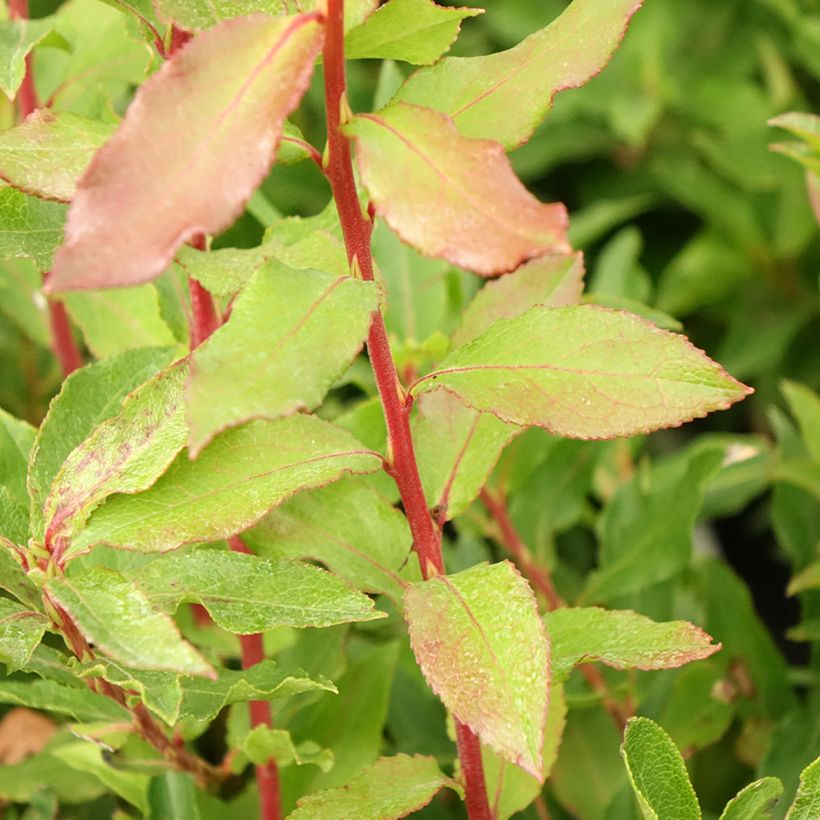

Plant habit
Fruit
Flowering
Foliage
Botanical data
Vaccinium
cylindraceum
Goutte Bleuef® 'Blautropf'
Ericaceae
Azores Blueberry
Cultivar or hybrid
Other Blueberry bush
View all →Planting and care
The ideal time to plant the Blue Drop Blueberry bush is in autumn (in regions that are not too cold) or any time of year outside of frost and heatwaves. This bush should be planted in full sun (but not scorching) in the north of France (east-facing, filtered sunlight) and must be in partial shade in the south. Choose a spot sheltered from cold winds, as its hardiness ranges from -12 to -15°C at peak for a mature and well-established plant. If planting multiple young plants, space them 60 cm apart in all directions.
Plant it in very acidic soil (pH between 4 and 5.5), incorporating pure heather soil or a mix of regular soil and turf, along with well-decomposed bark compost. The collar (junction point between the trunk and roots) should sit level with the soil. Firm the soil and water generously with non-calcareous water. In slightly calcareous soil, dig a hole at least 50 to 60 cm deep, line the edges with garden felt, place a 10 cm layer of non-calcareous gravel at the bottom, then fill with a mix of compost and heather soil, enriched with compost.
The soil should remain moist but not waterlogged: the plant can tolerate moderate drought but dislikes stagnant moisture. If watering is necessary, use non-calcareous and non-chlorinated water (such as collected rainwater). Mulch the base with shredded bark, straw, or fern leaves. A protective filament may be useful if birds become too greedy during harvest. In spring, apply a layer of well-rotted compost annually. The Blueberry bush is rarely affected by diseases or pests.
Planting period
Intended location
Care
-
, onOrder confirmed
Reply from on Promesse de fleurs
Similar products
Haven't found what you were looking for?
Hardiness is the lowest winter temperature a plant can endure without suffering serious damage or even dying. However, hardiness is affected by location (a sheltered area, such as a patio), protection (winter cover) and soil type (hardiness is improved by well-drained soil).

Photo Sharing Terms & Conditions
In order to encourage gardeners to interact and share their experiences, Promesse de fleurs offers various media enabling content to be uploaded onto its Site - in particular via the ‘Photo sharing’ module.
The User agrees to refrain from:
- Posting any content that is illegal, prejudicial, insulting, racist, inciteful to hatred, revisionist, contrary to public decency, that infringes on privacy or on the privacy rights of third parties, in particular the publicity rights of persons and goods, intellectual property rights, or the right to privacy.
- Submitting content on behalf of a third party;
- Impersonate the identity of a third party and/or publish any personal information about a third party;
In general, the User undertakes to refrain from any unethical behaviour.
All Content (in particular text, comments, files, images, photos, videos, creative works, etc.), which may be subject to property or intellectual property rights, image or other private rights, shall remain the property of the User, subject to the limited rights granted by the terms of the licence granted by Promesse de fleurs as stated below. Users are at liberty to publish or not to publish such Content on the Site, notably via the ‘Photo Sharing’ facility, and accept that this Content shall be made public and freely accessible, notably on the Internet.
Users further acknowledge, undertake to have ,and guarantee that they hold all necessary rights and permissions to publish such material on the Site, in particular with regard to the legislation in force pertaining to any privacy, property, intellectual property, image, or contractual rights, or rights of any other nature. By publishing such Content on the Site, Users acknowledge accepting full liability as publishers of the Content within the meaning of the law, and grant Promesse de fleurs, free of charge, an inclusive, worldwide licence for the said Content for the entire duration of its publication, including all reproduction, representation, up/downloading, displaying, performing, transmission, and storage rights.
Users also grant permission for their name to be linked to the Content and accept that this link may not always be made available.
By engaging in posting material, Users consent to their Content becoming automatically accessible on the Internet, in particular on other sites and/or blogs and/or web pages of the Promesse de fleurs site, including in particular social pages and the Promesse de fleurs catalogue.
Users may secure the removal of entrusted content free of charge by issuing a simple request via our contact form.
The flowering period indicated on our website applies to countries and regions located in USDA zone 8 (France, the United Kingdom, Ireland, the Netherlands, etc.)
It will vary according to where you live:
- In zones 9 to 10 (Italy, Spain, Greece, etc.), flowering will occur about 2 to 4 weeks earlier.
- In zones 6 to 7 (Germany, Poland, Slovenia, and lower mountainous regions), flowering will be delayed by 2 to 3 weeks.
- In zone 5 (Central Europe, Scandinavia), blooming will be delayed by 3 to 5 weeks.
In temperate climates, pruning of spring-flowering shrubs (forsythia, spireas, etc.) should be done just after flowering.
Pruning of summer-flowering shrubs (Indian Lilac, Perovskia, etc.) can be done in winter or spring.
In cold regions as well as with frost-sensitive plants, avoid pruning too early when severe frosts may still occur.
The planting period indicated on our website applies to countries and regions located in USDA zone 8 (France, United Kingdom, Ireland, Netherlands).
It will vary according to where you live:
- In Mediterranean zones (Marseille, Madrid, Milan, etc.), autumn and winter are the best planting periods.
- In continental zones (Strasbourg, Munich, Vienna, etc.), delay planting by 2 to 3 weeks in spring and bring it forward by 2 to 4 weeks in autumn.
- In mountainous regions (the Alps, Pyrenees, Carpathians, etc.), it is best to plant in late spring (May-June) or late summer (August-September).
The harvesting period indicated on our website applies to countries and regions in USDA zone 8 (France, England, Ireland, the Netherlands).
In colder areas (Scandinavia, Poland, Austria...) fruit and vegetable harvests are likely to be delayed by 3-4 weeks.
In warmer areas (Italy, Spain, Greece, etc.), harvesting will probably take place earlier, depending on weather conditions.
The sowing periods indicated on our website apply to countries and regions within USDA Zone 8 (France, UK, Ireland, Netherlands).
In colder areas (Scandinavia, Poland, Austria...), delay any outdoor sowing by 3-4 weeks, or sow under glass.
In warmer climes (Italy, Spain, Greece, etc.), bring outdoor sowing forward by a few weeks.






























